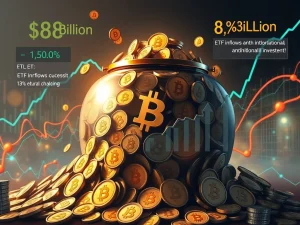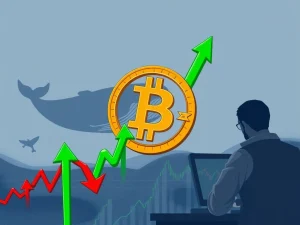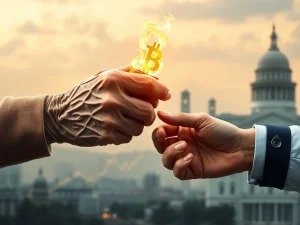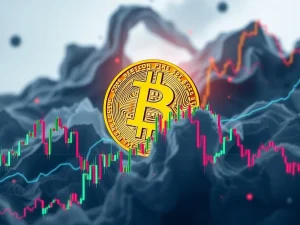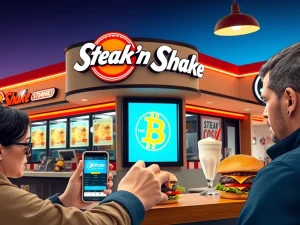Revolutionize Finance: How to Tokenize Real-World Assets on Bitcoin
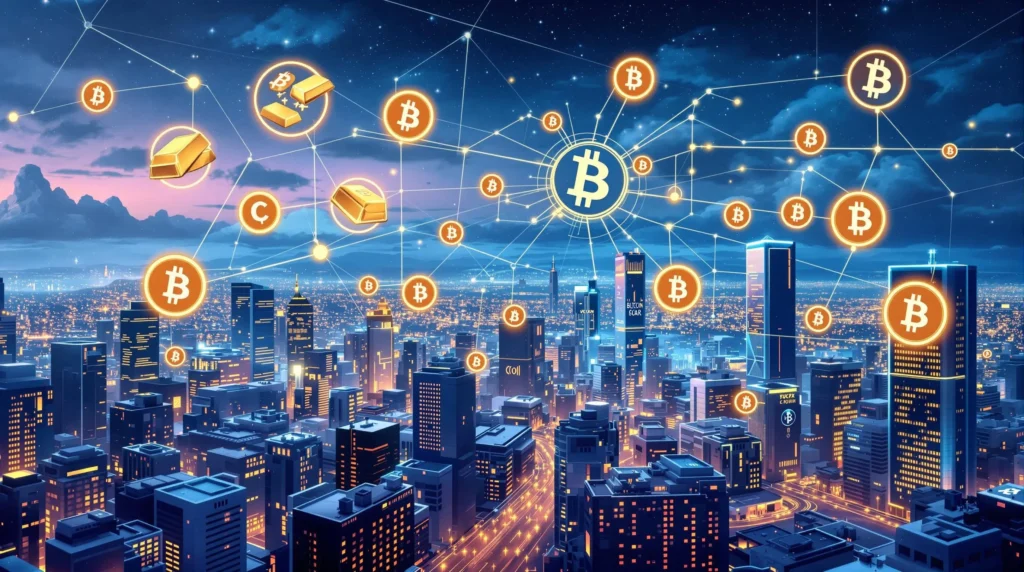
Have you ever imagined owning a fraction of a Picasso painting or a share in a prime real estate property, all secured by the robust Bitcoin network? Welcome to the exciting world of real-world asset (RWA) tokenization on Bitcoin! It sounds complex, but the core idea is surprisingly straightforward: turning tangible assets into digital tokens on the blockchain. Let’s dive into how this groundbreaking process works and explore the incredible potential it unlocks.
What Exactly is Real-World Asset Tokenization?
In simple terms, real-world asset tokenization is the process of creating digital representations of physical assets – anything from gold and real estate to art and even intellectual property – on a blockchain. Think of it like creating a digital twin for a real-world item. These digital twins are called tokens, and they represent ownership or rights to the underlying asset.
Why is this revolutionary? Because it brings a host of benefits to the table, making traditionally illiquid and inaccessible assets more accessible, divisible, and easily tradable. And when we talk about leveraging the Bitcoin blockchain for this, we’re adding another layer of security and decentralization to the mix.
Why Choose Bitcoin for Asset Tokenization?
Bitcoin, the king of cryptocurrencies, might seem like an unconventional choice for asset tokenization to some. After all, isn’t it primarily known for digital currency? While Bitcoin’s primary function is indeed as a decentralized digital currency, its robust and secure blockchain offers compelling advantages for tokenizing real-world assets:
- Unparalleled Security: Bitcoin’s blockchain is arguably the most secure and battle-tested in the crypto space. Its proof-of-work consensus mechanism, while energy-intensive, provides a formidable defense against attacks and tampering. This security is paramount when dealing with valuable real-world assets.
- Decentralization and Transparency: Bitcoin is the epitome of decentralization. No single entity controls it, making it resistant to censorship and single points of failure. Transactions are transparently recorded on the public ledger, fostering trust and accountability in bitcoin tokenization.
- Established Infrastructure: Bitcoin boasts a mature and well-developed infrastructure. Wallets, exchanges, and various tools are readily available, making it easier for developers and users to interact with and build upon the Bitcoin network for real-world asset tokenization.
- Global Reach and Brand Recognition: Bitcoin is a globally recognized brand. Its name carries weight and trust, which can be advantageous when attracting investors and users to platforms tokenizing assets on its blockchain.
The Process: How to Tokenize Real-World Assets on Bitcoin
Tokenizing real-world assets on Bitcoin involves several key steps. While the technical specifics can vary depending on the platform and the asset being tokenized, the general process typically includes:
- Asset Evaluation and Legal Framework: The first step is to thoroughly evaluate the real-world asset you intend to tokenize. This involves determining its value, verifying its ownership, and establishing the legal framework for tokenization. This is crucial for ensuring compliance and investor protection.
- Choosing a Tokenization Platform: Several platforms are emerging that facilitate bitcoin tokenization. These platforms provide the tools and infrastructure needed to create, manage, and trade asset-backed tokens on Bitcoin. Research and select a platform that aligns with your needs and the type of asset you’re tokenizing.
- Creating the Digital Token: This involves technically creating the token on the Bitcoin blockchain. This is often done using protocols built on top of Bitcoin, such as RGB or Taproot Assets. The token’s smart contract defines its properties, representing the rights and ownership associated with the underlying real-world asset.
- Issuance and Distribution of Tokens: Once the tokens are created, they need to be issued and distributed to investors or participants. This can be done through various methods, including private sales, initial token offerings (ITOs), or airdrops.
- Custody and Security: Secure custody of both the tokens and the underlying real-world asset is paramount. Robust security measures are needed to protect against theft, fraud, and unauthorized access. This often involves using secure wallets and custody solutions specifically designed for bitcoin tokenization.
- Trading and Liquidity: For real-world asset tokenization to be truly effective, there needs to be a marketplace for trading these tokens. Platforms and decentralized exchanges (DEXs) are being developed to facilitate the trading of asset-backed tokens on Bitcoin, enhancing liquidity and price discovery.
Benefits of Tokenizing Assets on Bitcoin
The advantages of asset tokenization on Bitcoin are manifold and transformative, impacting various aspects of finance and asset management:
- Increased Liquidity: Tokenization fractionalizes ownership, making it possible for more people to invest in high-value assets. This fractional ownership dramatically increases liquidity, as tokens can be traded more easily than the underlying physical assets.
- Enhanced Accessibility: Tokenization democratizes access to investment opportunities. Previously inaccessible assets, like fine art or commercial real estate, become available to a wider range of investors, regardless of their location or traditional investment portfolio size.
- Greater Transparency and Efficiency: Blockchain technology inherently provides transparency and efficiency. Transactions are recorded on an immutable ledger, reducing paperwork, streamlining processes, and lowering administrative costs associated with traditional asset management.
- Fractional Ownership and Divisibility: Tokenization allows for fractional ownership, meaning assets can be divided into smaller, more affordable units. This opens up investment opportunities to retail investors and enables diversification with smaller capital outlays.
- Faster and Cheaper Transactions: Transactions involving tokenized assets on Bitcoin can be faster and cheaper compared to traditional methods, which often involve intermediaries and lengthy settlement times.
- Global Markets and 24/7 Trading: Bitcoin and blockchain operate globally and 24/7. This enables tokenized assets to be traded around the clock, across borders, creating truly global and always-on markets.
Navigating the Challenges of Bitcoin Asset Tokenization
While the potential of bitcoin tokenization is immense, it’s crucial to acknowledge the challenges that need to be addressed for widespread adoption:
- Regulatory Uncertainty: The regulatory landscape for tokenized assets is still evolving globally. Clarity and consistent regulations are needed to provide legal certainty and foster investor confidence in real-world asset tokenization.
- Security Risks and Custody Solutions: While Bitcoin itself is secure, the platforms and infrastructure built on top of it need to maintain robust security. Secure custody solutions for both tokens and underlying assets are critical to prevent theft and fraud.
- Scalability and Transaction Fees: Bitcoin’s base layer has limitations in terms of scalability and transaction fees, especially during periods of high network activity. Layer-2 solutions and efficient protocols are needed to address these challenges for large-scale asset tokenization on Bitcoin.
- Interoperability: Seamless interoperability between different tokenization platforms and blockchains is crucial for a thriving ecosystem. Standards and protocols that facilitate interoperability are essential for the future growth of real-world asset tokenization.
- Adoption and Education: Widespread adoption requires education and awareness among both investors and traditional financial institutions. Overcoming skepticism and demonstrating the real-world benefits of bitcoin tokenization is key to driving mainstream adoption.
Examples of Real-World Assets Ripe for Tokenization on Bitcoin
The range of real-world assets that can be tokenized on Bitcoin is vast. Here are just a few compelling examples:
- Real Estate: Tokenizing real estate can fractionalize property ownership, making it accessible to smaller investors and increasing liquidity in the real estate market.
- Commodities (Gold, Silver, Oil): Tokenizing commodities allows for easier trading and ownership of physical assets like gold and oil, reducing the complexities and costs associated with traditional commodity markets.
- Art and Collectibles: Tokenizing art and collectibles opens up investment in these unique assets to a broader audience and can help verify authenticity and provenance.
- Luxury Goods (Watches, Jewelry): Tokenization can bring transparency and traceability to the luxury goods market, combating counterfeiting and facilitating easier resale and investment.
- Intellectual Property (Patents, Royalties): Tokenizing intellectual property can streamline the management and trading of rights and royalties, benefiting creators and investors alike.
Actionable Insights: Getting Started with Bitcoin Asset Tokenization
Interested in exploring real-world asset tokenization on Bitcoin? Here are some actionable steps to consider:
- Educate Yourself: Deepen your understanding of blockchain technology, bitcoin tokenization protocols, and the legal and regulatory landscape.
- Research Platforms: Explore different platforms that facilitate bitcoin tokenization. Compare their features, security, and fees to find one that suits your needs.
- Start Small: Begin with a small-scale project or investment to gain practical experience and understand the nuances of real-world asset tokenization.
- Network and Engage: Connect with experts, developers, and communities involved in bitcoin tokenization to learn from their experiences and stay updated on the latest developments.
- Prioritize Security: Always prioritize security when dealing with tokenized assets. Use secure wallets and follow best practices for custody and transaction management.
The Future is Tokenized: Bitcoin Leading the Charge
Tokenizing real-world assets on Bitcoin is more than just a trend; it’s a paradigm shift in how we perceive ownership, investment, and the very nature of assets. By leveraging the security, decentralization, and global reach of Bitcoin, we are on the cusp of unlocking trillions of dollars in previously illiquid assets. While challenges remain, the potential benefits of increased liquidity, accessibility, and efficiency are undeniable. As the ecosystem matures and regulatory clarity emerges, expect to see bitcoin tokenization play an increasingly significant role in the future of finance, transforming how we interact with and invest in the world around us. The revolution has begun, and Bitcoin is poised to be at the forefront of this exciting new era.

